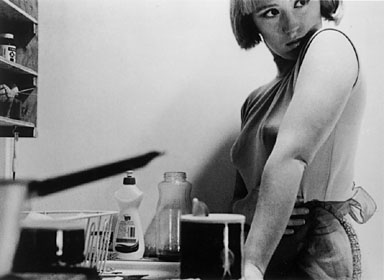 The idea of a portrait is usually a pretty straight forward one – artwork that depicts an actual person. The outcome can shift though when intentionally creating an alter ego for the subject. It can put the true meaning of “portrait” into question, and instead create a different type of portraiture that balances fiction and reality.
The idea of a portrait is usually a pretty straight forward one – artwork that depicts an actual person. The outcome can shift though when intentionally creating an alter ego for the subject. It can put the true meaning of “portrait” into question, and instead create a different type of portraiture that balances fiction and reality.

For the next group of pictures, Sherman uses college friend Robert Longo’s Long Island beach house as her backdrop. She worked on the series of 69 portraits for three years, until 1980. She experiments with other locations, as well as returning back to the comforts of her own apartment. Sherman creates numerous characters for these portraits, and protects their anonymity by numbering each one and referring to them as “Untitled”.
While “The Untitled Film Stills” may be what Sherman is known best for, she has produced many other notable works. Another conceptual project is her series “Centerfolds” which she was commissioned to create by ArtForum magazine. For these portraits, Sherman wanted to focus on the idea of the objectification of a centerfold pinup girl. These non-traditional photos are meant to inspire thought about what one expects when flipping to the center of a magazine.
Although Sherman has denied that her work is overtly feminist, video clips like this one suggest otherwise.
(ed note: i realize this video is a bit risque for younger children, and would only work as an example with more mature students.)




No comments:
Post a Comment